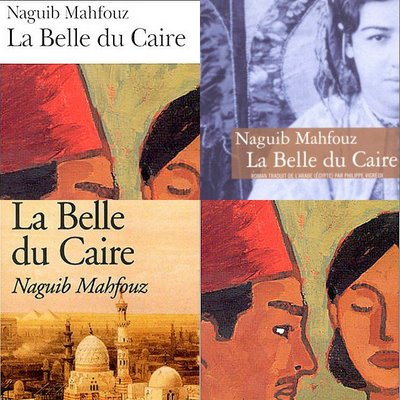Insider's view on what was pre-Nasser Cairo life really like..

One of the books I indulged while laying by the colonnaded pool at the Rhoul Palace, in a peaceful Nirvana-like hot afternoon in Marrakesh, was Mahfouz' "La Belle du Caire". In this respect I have to confess to the Right Honourable Reader that this blogger of yours has in department of Literature-in-Fancy-Places been moving slowly from Western Imperialist to Orientalist and more recently to Anti-colonialist. I will explain myself in a second.
Take enormously exotic places with palm trees, decadent enough and with huge romantic appeal: what names present themselves to one's memory? Tangiers? Right. Casablanca? Fair enough. Cairo? For sure. Damascus? You bet. Alexandria? Right, fair enough, for sure and you bet. But from whom do we take our literary clues about those places? Paul Bowles and William Boroughs gave us beat-generation gay Tangiers. Murray Burnett, the play-writer of "Everybody comes to Rick's" , later re-named "Casablanca", served us spy & refugees Casablanca on a plate. Ondatje gave us the British war partying Cairo. T.H. Lawrence, "of Arabia", took us, with the help of David Lean, to a peterotoolish version of Damascus. Forster and Durrell moulded our Alexandria.
What have all those novels and fictional cities in common? Almost no aborigines. Mr Bowles might have had a Tangerine male lover and promoted the works of his friend but almost all the relevant characters on his novels are "European" ( a category that in the Imperial white world-view includes the Americans). Boroughs did just the same. "Casablanca" has not one Moroccan main role (although we have secondary characters of almost every European origin). Forster was in love when in Alexandria but could not persuade himself to write about it (in that case we would have had an Egyptian fellow immortalized). Durrell had at least the Hosnani family, you might remark. But they were Copts, and oh! so Europeanized.
My point is that we, novel-lovers, have come to acquire a biased view of those places. Cosmopolitan but strangely without almost any trace of representatives of the autochthonous population. Now, is this some kind of near-Marxist comment on the absence of the local proletariat? No, Sir! It's only that when one reads Maphouz (the Alexandria depicted in "Miramar", or the Cairo described in "La Belle du Caire") the city sounds so much more alive and authentic. All very nice but where are the Europeans in there? - the Right Honourable Reader might ask yourself with an ironical smirk. Point taken, but my plea is less fundamentalistic than you think. I propose that for each Anglo-Saxon Alexandria one should read an Egyptian Al-Yksandria. For each Foster a Malouf, for each Durrell a Edward al-Kahrrat, for each Lawrence a Souef or a Samia Serageldin.
Slowly the great Lit Cities will become four-dimensional, moving holograms of people of all complexions in landscapes with terracota walls, dusty alleys and reclined palm trees.
No comments:
Post a Comment